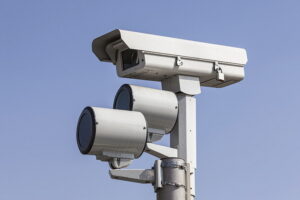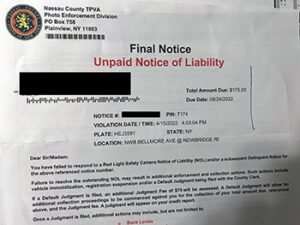Note: I do not manage red light tickets. These articles are just for informative purposes only. Please refer to my home page if you need help with moving violations!
In our previous article, we spoke about the pros and cons of red light cameras. Now let’s delve away from the politics and into the physical realm of the workings of red light cameras that are placed at our intersections.
What is a Red Light Camera?

A red light camera is an automated system that is synchronized to take pictures of drivers who run red lights. They’re also sometimes called photo enforcement systems or automated red light enforcement systems.
These cameras have been around for decades, but their use has grown significantly in recent years. Since the early 2000s, the number of municipalities using red light cameras has increased by 400%, with more than 6,000 communities using them in the U.S. today.
Most red light cameras are installed at intersections with high traffic signal violations, particularly right-on-red violations. They’re timing is activated when the yellow light turns red and there is still a car moving through the intersection.
What Triggers the Cameras?
The technologies vary but they all come down to the same purpose – to catch a light-runner. The specific technology uses is called an induction-loop trigger (discussed in the next section), which is located under the road not too far away from the crosswalk. Yep, there is a device on the road that is synced with the camera.
This device constantly monitors the cars as they cross the road. If a car sets crosses into the intersection when the light is red, it will trigger the camera and subsequently, the computer will take two pictures. The first photography is of the car when it reaches the crosswalk and if there is no crosswalk, then the measured edge of the intersection and the second photo is taken when the the car in the middle of the intersection. Of course, there is no second picture taken if the car stops and doesn’t continue on when the light is red.
In some states, the actual driver can be held responsible. In this situation, there will be a second camera in front of the car, so that the driver’s face can be clearly photographed. In Long Island and New York State, it is the owner of the vehicle that is held responsible regardless of who is driving the car.
The Induction Loop Trigger
The trigger process is done through the use of electromagnetism – where an electrical current travels through a wire creating an electric field. The wire is looped around the asphalt, hence, an induction loop trigger and when a car rides over it, it disturbs the magnetic field subsequently trigging the computer system that a vehicle is there. There are other technologies such as as radar and laser loops, but the induction loop is the most common.
The Video Loop
This is an upgrade that uses videos to determine if a vehicle has run a red light. In this framework, a computer system monitors the vehicles via a video feed. The system reviews each video frame to determine if there are any significant changes at specific places in the picture, and can determine if the vehicle has passed through the intersection on a red light. The benefit here is that they don’t have to take the road apart to install the induction loop.
Who Decides Whether or Not to Install a Red Light Camera?
Each state has a different set of rules regarding red light cameras. Some states allow them, some states specifically prohibit them, and some states leave the decision up to the local governments within their borders. In states that allow the installation of red light cameras, the decision to install one is usually left up to the city or town council. In states that prohibit red light cameras, the decision falls to the state government. Local governments can also decide to remove their red light cameras.
Are There Ways to Avoid Being Ticketed By a Red Light Camera?

Once an intersection has been outfitted with red light cameras, there’s not much you can do to avoid a ticket if you break the law. However, if you are driving in a town with these cameras, you can take a few steps to decrease your chances of getting a ticket.
First, make sure that you know exactly where the red light cameras are located. For Long Island, you can find this information on numerous websites. In New York State, most of these cameras are found in the New York City metropolitan area. Additionally, some GPS navigation apps notify you when you are approaching an intersection with these cameras.
Of course, the common sense is the overriding factor here and quite simply, driving safely is what will keep you from unnecessary accidents – and that includes not making hasty decisions of whether you should try to ‘jump the light’ at an the intersection when it turns yellow.
If you are at a camera intersection and you want to make a right turn on red (where it is allowed), make sure you come to a full stop, with your foot on the brake pedal, for a minimum of three seconds. Finally, be aware that red light cameras often cause drivers to slam on their brakes out of fear of running the red light. Make sure you are a safe distance from any cars in front to you. This should always apply to whenever you are driving!
Conclusion
Red light cameras are controversial, but they are also a reality of modern life. Drivers who want to avoid tickets should know where the cameras are located and be extra cautious at intersections that have them. If you’ve been ticketed for a red light violation, you should know that every ticket comes with a chance to fight it. It’s always best to consult with a lawyer before deciding what to do, but in general, you can either plead guilty and pay the fine or request a court hearing to plead your case. But the best practice is, regardless of whether there is a camera or not – don’t cross on red!